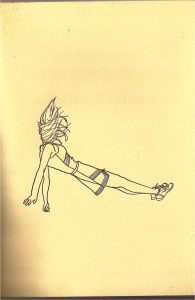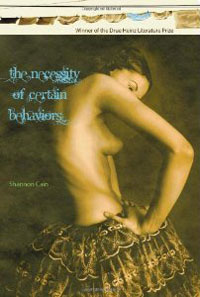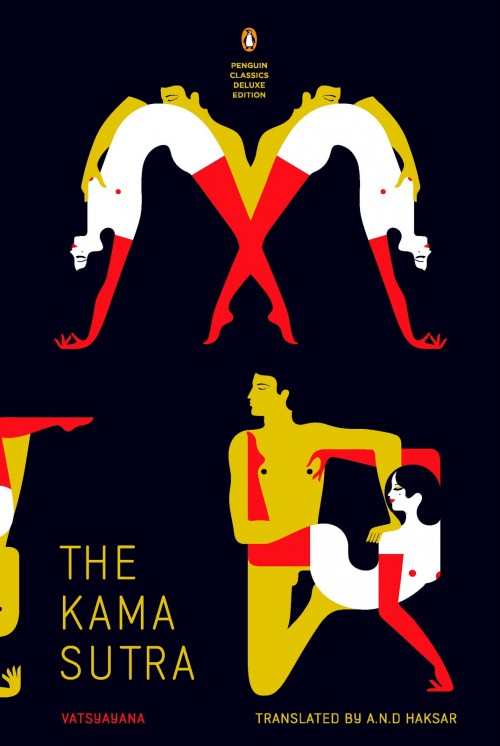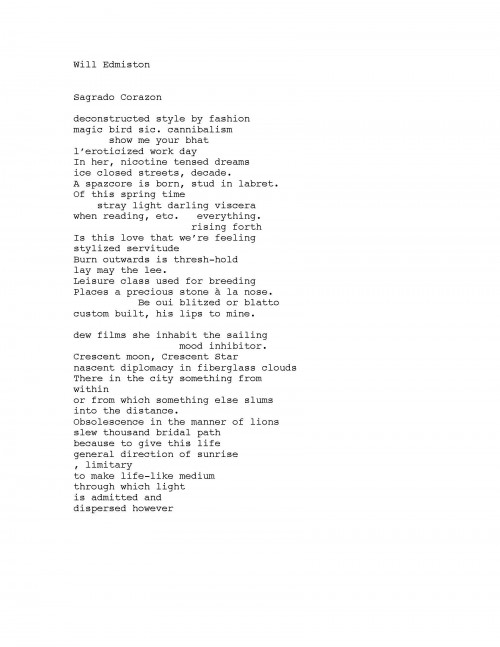Kama Sutra, Baby
Penguin Classics is releasing a new translation of the Kama Sutra, the ancient spiritual sex manual (yes, it’s much more than that, I know) that people pretend to know all about when they want to impress a date. Or, maybe I saw that in a movie once. This new version, translated by A.N.D. Haksar, has been adapted to modern lives. It’s the Kama Sutra, for the people, now featuring wit and charm.
Penguin has offered to give a copy to a lucky reader, so I’m having a contest! To enter, invent a new sexual position that belongs in the Kama Sutra. Leave your entries in the comment field. The best one wins and you have until Wednesday, the 25th. This will be fun, I hope. I’ll also throw in Running the Rift by Naomi Benaron, The Fallback Plan by Leigh Stein, and also some galleys TBD.
Ben & Amy Read Chapbooks: Photo Review Edition
Here are some chapbooks that Amy Lawless and I read recently and want to share with you.
 effie by Will Edmiston (Three Sad Tigers Press, 2011)
effie by Will Edmiston (Three Sad Tigers Press, 2011)
Construction: Elegant letterpress of a cheerleader in midair after being thrown up by her teammates (from a series called Fan Death by Kristina Williamson). Thick cream card stock cover. The poems themselves are printed in whatever font a typewriter is.
Sample Poem:
January 20th, 2012 / 7:23 pm
Blurbs

“This grilled cheese is a sandwich that depicts hope, and the absence of hope, in modes that are simultaneously personal and universal. The surface of the sandwich may appear simple, but one is always engaged by a deeper fullness, richness and multivalence. A triumphant debut.”

“At times both funny & heartbreaking, these three emotionally rich & incisive musketeers weave the remembered with the present. A postmodern classic.”

“If there’s a more thoroughly brilliant and exciting new muffin than the blueberry…well there just isn’t.”

“A dill pickle continually engages and surprises. In its rhetorical honesty, emotional lucidity and lyric vivacity, it captures the simultaneous joy and dejection of young men caught in the ‘industrial pull’ of our time.”
Mirror men

That The Curious Case of Benjamin Button (1922) was posthumously made into a film (2008) may be ironic — to brave a word perhaps deplete of any meaning by now — given the author’s self-perceived degradation of writing for Hollywood as he grew older and financially more dependent in his maintenance of a vapid lifestyle. His last lover was a gossip columnist, proof that blogging has always existed. They say a writer’s best work is in his late twenties, before the soft middle-age limpy interval, but that only a great writer will make his best work near his death, alluding so some moral component and/or mortal imperative of great writing. It is sad to think of a drunk Fitzgerald, a loopy sentimental Hemingway, or a blind ass jibbering Joyce; we look towards Tolstoy, Shakespeare, as examples of work whose maturity lies in correlation with their age. We may see Benjamin Button as an inadvertent commentary on the mediocre artist, the fated infant. In 1935, at the age of 68, Pierre Bonnard painted “Self Portrait in a Shaving Mirror,” two eye socket holes hidden in the shadow of his own face, perhaps seared by the southern France sun of younger days before locking himself in the bathroom — something he may have learned from his wife Marthe, an obsessive compulsive bather (hence, the bathing series), on whom he cheated with one Renée Monchaty, of sunnier disposition. In his paintings of the former, the latter is often hidden at the edge of the canvas, camouflaged in the quivering aggregate of floral brush marks which consumed him. Bonnard didn’t name it “Self Portrait in a Shaving Mirror” — an art historian came along later to distinguish it from the all the other ones, to make discourse when discourse was not intended easier. But it’s hard to comment when you’re dead, and other perilous times as well.
Cover Fail
The difference between a press you’ve admired for years and a press you’ve never heard of is the former is willing to pay a little money for its covers. There are presses that have been around for decades, that pour their sweat and tears into publishing more words than any of us realize, and that absolutely no one but a tenure committee cares about because they can’t be bothered to pay for a decent cover. I’m not above designing without the proper training myself, but I at least pay for raw art to use on my magazine’s covers — and I do try to actually design. I didn’t want to call anybody in particular out, and it’s insanely easy to replicate the bad covers that drive me up the wall, so I made a few shit covers of my own. If your press’s output looks anything like this, for the love of God, stop what you’re doing and find a freelancer to do something better.
Now let’s talk about what happened here:
Street-Side, Bedside, Broadside: An Interview With Shannon Cain
 The Necessity of Certain Behaviors
The Necessity of Certain Behaviors
by Shannon Cain
University of Pittsburgh Press, 2011
160 pages / $24.95 Buy from Amazon
Stories in Shannon Cain’s The Necessity of Certain Behaviors pair exhibitionist events and their three-ring tableaus with characters who typify “marginal,” yet who nonetheless surprisingly assert not only their outsider status, often in correlation with their sexualities, but also their complexities—a young lesbian ventures to the set of The Price is Right to meet her father, Bob Barker, only to find not parental but sexual identities challenged; a mayor’s wife endures the scandalizing of her sexuality after she is caught masturbating in the YMCA’s shower room, only to find that her new relegation to sexual deviant has allowed her singular insight into victims of the myriad sexual minefields in her community—the cumulative effect of these stories also achieves a reversal: common notions of taboo or freakishness gain warmth and humanity, while the normative culture unveils its crippling deformities. Cultural critique couldn’t have a more compelling and sophisticated face. In an era often favoring equivocation as a substitute for vision, this collection is clear: take a stand, make it compassionate. Others agree, of interest to note: American Literary Review, American Short Fiction, Colorado Review, Massachusetts Review, Southwards, Tin House, The O. Henry and Pushcart Prizes, the National Endowment for the Arts, and The Drue Heinz Literature Prize.
January 20th, 2012 / 12:00 pm
The unpublished concept notes for a book on social media marketing
A Google Document authored by Adam Humphreys and Erik Stinson that had not been opened for 9 months:

Insight:
Most books about social media are written for clueless older MBA guys, by slightly less clueless, slightly younger MBA guys. They are used to selling things for Proctor and Gamble and started their personal blog in 2009.
January 20th, 2012 / 11:24 am




